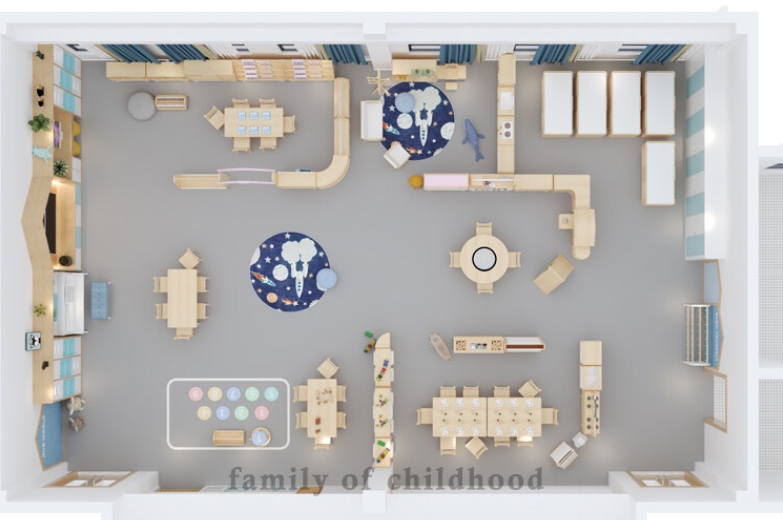24 May, 2024
In the vibrant world of early childhood education, every detail matters when it comes to nurturing young minds. From the curriculum to the classroom environment, each element plays a crucial role in supporting children's growth and development. One often overlooked but essential aspect is the quality of play furniture. Investing in well-designed, age-appropriate furniture can have a profound impact on a child's learning experience.
Children's safety is the top priority in any educational setting. Quality play furniture is designed with safety in mind, featuring rounded edges, non-toxic materials, and sturdy construction to prevent accidents and injuries. Properly sized furniture ensures that children can comfortably and safely engage in activities, reducing the risk of falls or strain on their growing bodies. By providing a secure environment, educators can create a space where children feel protected and confident to explore and learn.
Play furniture is not just a place for children to sit or store their belongings; it is an essential tool for learning and development. Well-designed furniture encourages exploration, creativity, and problem-solving skills. For example, open-ended play furniture such as building blocks or dramatic play sets stimulate imagination and social interaction. Sensory tables and art easels provide opportunities for hands-on learning and fine motor skill development. By offering a variety of play furniture, educators can create an environment that caters to different learning styles and interests, promoting holistic growth.
Quality play furniture empowers children to take ownership of their learning environment. Child-sized shelves, cubbies, and accessible storage solutions allow children to independently select and put away materials, promoting a sense of responsibility and self-reliance. When children can easily navigate their surroundings and access resources, they develop a sense of autonomy and confidence in their abilities. This boost in self-esteem carries over into their academic and social pursuits, setting a strong foundation for future success.

Play furniture can be a catalyst for social interaction and collaboration among young children. Grouping tables and chairs creates opportunities for children to work on projects cooperatively, fostering communication, problem-solving, and social skills. Dramatic play furniture such as kitchen sets or dress-up corners encourages role-playing and imaginative play, allowing children to explore social dynamics and develop empathy. By designing play spaces that facilitate social interaction, educators can help children build strong relationships and learn valuable life skills.
Children spend a significant portion of their day in the classroom, and their physical comfort is crucial for their well-being and ability to focus. Quality play furniture is designed with ergonomics in mind, providing proper support for children's growing bodies. Chairs and tables that are appropriately sized and adjustable ensure that children can maintain good posture and avoid strain or discomfort. Soft furnishings like cushions and beanbags create cozy spaces for relaxation and quiet activities. By prioritizing comfort, educators can create an inviting atmosphere that promotes learning and reduces distractions.
Investing in quality play furniture is a wise long-term decision for early childhood education centers. High-quality furniture is built to withstand the wear and tear of daily use, ensuring that it remains safe and functional for years to come. Durable materials and sturdy construction reduce the need for frequent replacements, saving resources and maintaining a consistent learning environment. Furthermore, well-designed furniture can adapt to the changing needs of a growing child, making it a worthwhile investment in their educational journey.
In conclusion, the importance of quality play furniture in early childhood education cannot be overstated. It promotes safety, enhances learning and development, fosters independence and self-esteem, encourages social interaction and collaboration, provides comfort and ergonomic support, and serves as a long-term investment. By carefully selecting play furniture that aligns with the needs and goals of their program, educators can create a nurturing environment that sets the stage for a lifetime of learning and growth.